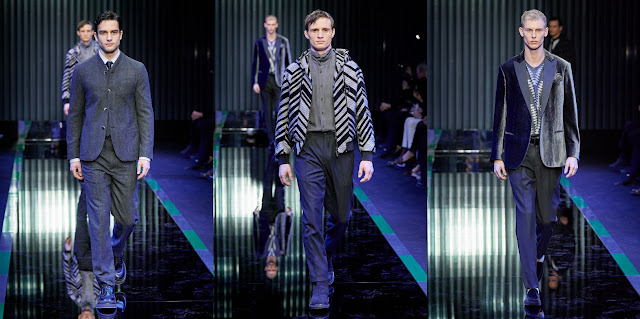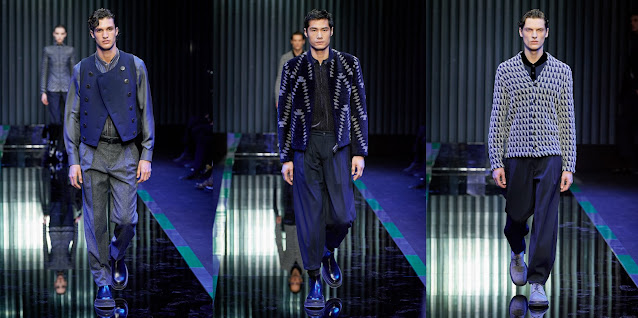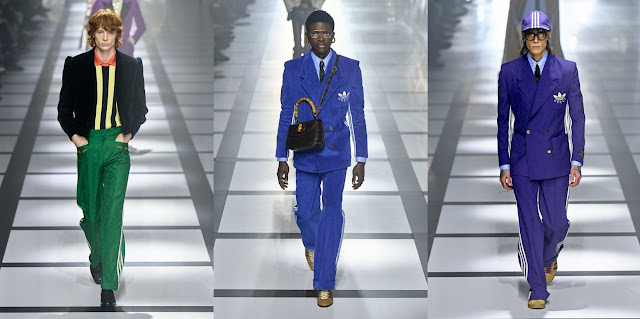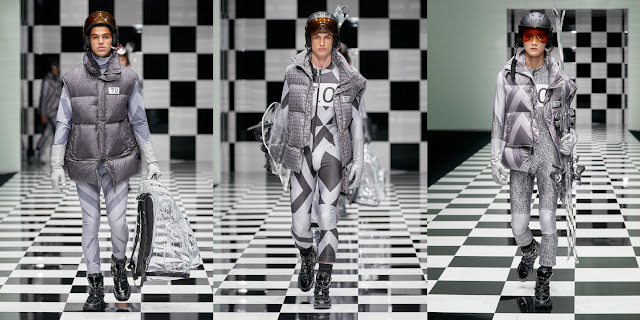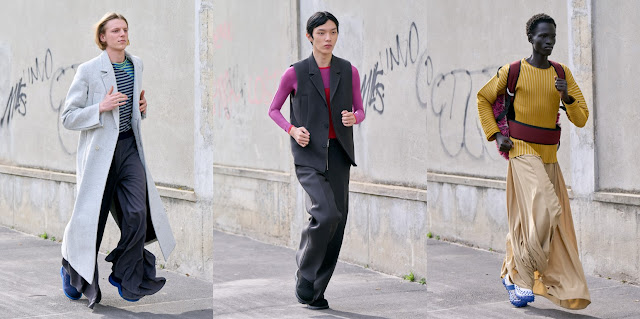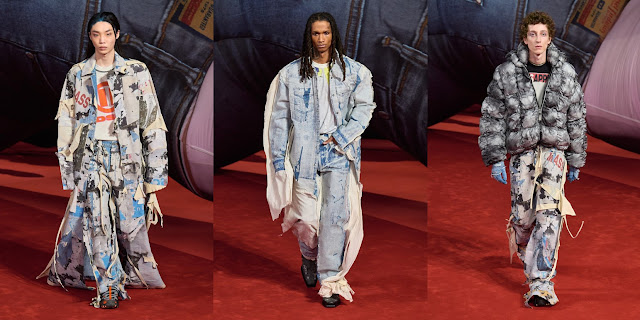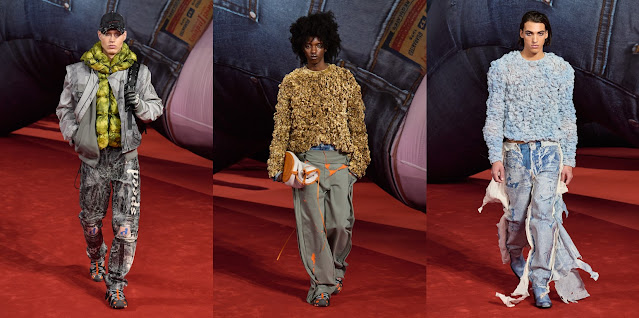While it is lovely to see references to times past in clothing, it is unfortunate that we are witnessing a repeat of history right now in Eastern Europe. Before the show, a voice read a statement from the designer in English: "My decision not to use any music in the show was made as a sign of respect to the people affected by the evolving tragedy." Later Armani said, "What could I do? I could only signal my heartbeat for the tragedy through the silence. I didn't want show music. The best thing is to give a signal that we’re not happy, to recognize something disturbing is happening. I think the clothes became even more powerful through the silence."
Writing for Vogue, fashion journalist Anders Christian Madsen astutely and poignantly noted: "Tailoring and dresses constructed in cubic prints and intarsia couldn’t help but draw the mind to the 1930s, a recurring symbol this season. As on other runways, the motif was perhaps reflective of Armani’s mindset during the collection’s design process, no doubt affected by the escalating fears of conflict, which culminated in this week’s invasion. For this designer, however, wartime isn’t simply a reference. It’s a memory. Born in 1934, Armani was eleven years old when the Second World War came to an end. He has experienced war on European soil, and the tolerance, diplomacy and elegance that embody his life’s work are products of a mind borne out of a wartime aftermath that most of us could never imagine."
While we all--Armani included--recognize the tragedy, threat, and severity of this moment in the world, it's during challenges like these that the arts become even more important. While it might be "just clothes" to some, as I have said before, beauty and creativity are balms for troubled times.


